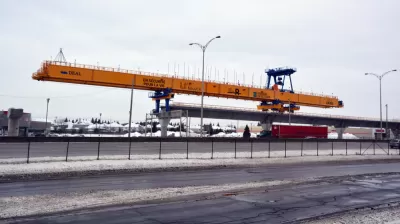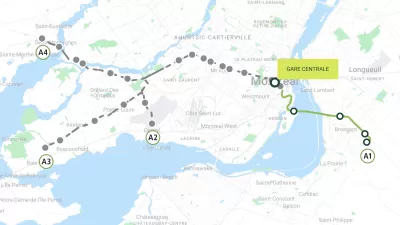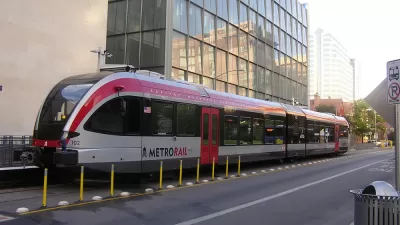Montreal officials recently announced details of a major expansion of the Réseau express métropolitain (REM).

"Montreal's light-rail network will be extended by about 30 kilometres, bringing it into Montréal-Nord and Pointe-aux-Trembles," according to an article published by CBC that preceded an official announcement of the project by a day. The extensions are added to a system still under construction, with commissioning expected in 2022.
The extension will also add a total of 23 stations to the system, with work expected to begin on both sections in 2023.
"The extension to the east would begin at Gare Centrale, where the train would run along René-Levesque Boulevard above ground all the way to Notre-Dame Street east of the Jacques Cartier Bridge," according to the article. "The tracks will then extend to Dickson Street, where they will bifurcate — one going north underground following Lacordaire Boulevard to Cégep Marie-Victorin and the other going east to Pointe-aux-Trembles along Sherbrooke Street."
More details about the project can be found in a press release from the Caisse de dépôt et placement du Québec published on December 15.
Here's how the press release describes the process that led to the announcement:
Following the Québec government’s mandate, this transit solution was identified after a thorough study of the technical and economic aspects. This study confirms that the project is viable: it meets the transportation needs of local communities, and allows CDPQ to generate the necessary returns to meet the expectations of its depositors while supporting Québec’s economic recovery in the years to come.
The projects are expected to total $10 billion—the largest-ever investment in public transit in the province of Quebec.
FULL STORY: REM to be extended to east and north ends of Montreal

Alabama: Trump Terminates Settlements for Black Communities Harmed By Raw Sewage
Trump deemed the landmark civil rights agreement “illegal DEI and environmental justice policy.”

Planetizen Federal Action Tracker
A weekly monitor of how Trump’s orders and actions are impacting planners and planning in America.

The 120 Year Old Tiny Home Villages That Sheltered San Francisco’s Earthquake Refugees
More than a century ago, San Francisco mobilized to house thousands of residents displaced by the 1906 earthquake. Could their strategy offer a model for the present?

In Both Crashes and Crime, Public Transportation is Far Safer than Driving
Contrary to popular assumptions, public transportation has far lower crash and crime rates than automobile travel. For safer communities, improve and encourage transit travel.

Report: Zoning Reforms Should Complement Nashville’s Ambitious Transit Plan
Without reform, restrictive zoning codes will limit the impact of the city’s planned transit expansion and could exclude some of the residents who depend on transit the most.

Judge Orders Release of Frozen IRA, IIJA Funding
The decision is a victory for environmental groups who charged that freezing funds for critical infrastructure and disaster response programs caused “real and irreparable harm” to communities.
Urban Design for Planners 1: Software Tools
This six-course series explores essential urban design concepts using open source software and equips planners with the tools they need to participate fully in the urban design process.
Planning for Universal Design
Learn the tools for implementing Universal Design in planning regulations.
Clanton & Associates, Inc.
Jessamine County Fiscal Court
Institute for Housing and Urban Development Studies (IHS)
City of Grandview
Harvard GSD Executive Education
Toledo-Lucas County Plan Commissions
Salt Lake City
NYU Wagner Graduate School of Public Service





























